The Agua Caliente Permanent Gallery is dedicated to the culture of the Agua Caliente People. The nearly 10,000-square-foot space is divided into five exhibition areas that each offer a unique piece of the Agua Caliente story:

Our Home introduces visitors to the Cahuilla Nation, which includes lands occupied by the Agua Caliente Band of Cahuilla Indians and the eight other bands of Cahuilla Indians.
Creation and Migration uses 360-degree projection and immersive digital animation to tell the Agua Caliente Creation and Migration stories in a theater setting.
Our Land explores the ancestral lands of the Agua Caliente people in more depth. Scale replicas of the Indian Canyons: Palm, Andreas, Tahquitz, and Chino, as well as the Tribe's sacred mineral hot spring, Séc-he, can be found here, along with examples of Agua Caliente ceremonial practices, material culture, and artistic expression.
Change, Adaptation, Self-Determination takes the visitor through the Tribe's more recent history, beginning with the arrival of Euro-American settlers in the 19th century and ending in the present day, by way of a visual timeline and numerous audiovisual elements.
Into the Future takes a step backwards in time to focus on archaeology, specifically the artifacts that were discovered during excavations for the Agua Caliente Cultural Plaza that includes the Agua Caliente Cultural Museum and the Spa at Séc-he. The manos, metates, and projectile points on display, carbon-dated as far back as approximately 8,000 years, demonstrate the Agua Caliente people's longstanding occupation of this region.
The Agua Caliente Cultural Museum Changing Gallery is a 2,200 square-foot rotating gallery designed to showcase both traditional and contemporary Native American art.

Exhibition Title: Section 14 The Untold Story
Exhibition Dates: June 14, 2025 - May 31, 2026
Since time immemorial, the Agua Caliente people have called this land home. Many voices have commented and argued over the history and legacy of Section 14. Now, the Agua Caliente Band of Cahuilla Indians share our perspectives on this land and the Tribe's continuing efforts to assert rightful sovereignty over it.
Section 14 The Untold Story unfolds around a central theater in the Museum’s Changing Gallery. In the newly-released 16-minute film at the center of the exhibition, Tribal Elders recall life on Section 14 and the struggles their families and their community endured. Around this powerful record, the exhibition presents documentary evidence, the facts of the matter drawn from local, state, and national archives: How private interests worked to take our land and deny our rights. How we fought to regain those rights and hold firmly onto our land and our culture.
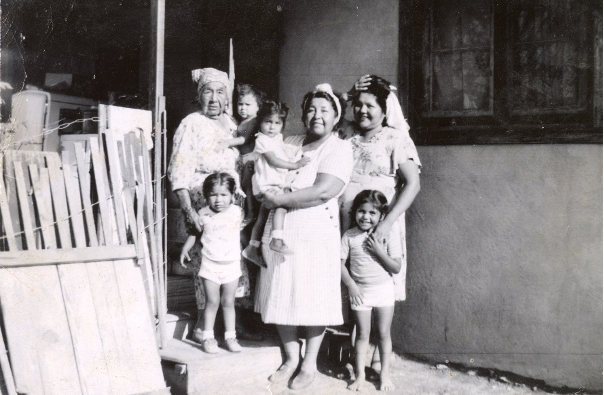
Family Photograph
Circa late 1940s
From left to right:
Top row: Nellie Mike, Mildred "Millie" Browne, Jennifer Mike Ketcher, Lucy Pete Saubel, and Elizabeth Pete Monk
Bottom row: Priscilla Pete and Kathy Kitchen
Courtesy of Mildred "Millie" Browne
Collection of the Agua Caliente Cultural Museum
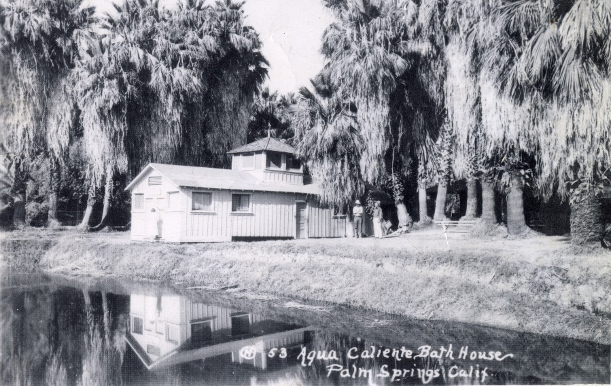
Agua Caliente Bathhouse
Circa 1910
Courtesy of Mildred "Millie" Browne
Collection of the Agua Caliente Cultural Museum
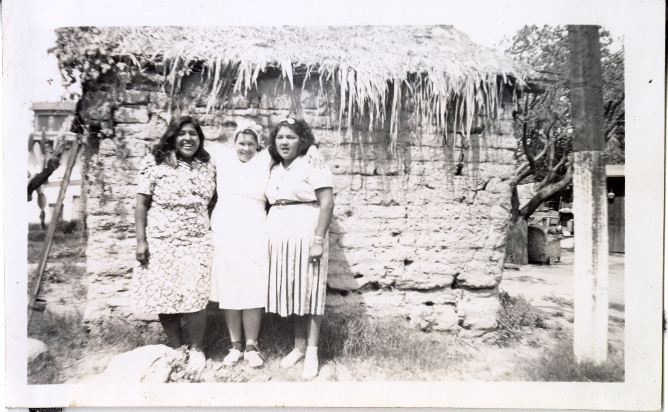
Women Outside of Calistro Lubo's House
Circa 1940s
From left to right: Katherine Siva Saubel, Unknown, and Elizabeth Pete Monk
Courtesy of Mildred "Millie" Browne
Collection of the Agua Caliente Cultural Museum
Exhibition Title: For a Love of His People: The Photography of Horace Poolaw
Exhibition Dates: November 2023 - April 6, 2025
Horace Poolaw (Kiowa, 1906-1984) was born during a time of great change for his people—one year before Oklahoma statehood and six years after the U.S. government approved an allotment policy that ended the reservation period. A rare American Indian photographer who documented Indian subjects, he began making a visual history in the mid-1920s and continued for the next 50 years.
Poolaw photographed his friends and family, and events important to them—weddings, funerals, parades, fishing, driving cars, going on dates, going to war, playing baseball. When he sold his photos at fairs and community events, he often stamped the reverse: "A Poolaw Photo, Pictures by an Indian, Horace M. Poolaw, Anadarko, Okla." Not simply by “an Indian,” but by a Kiowa man strongly rooted in his multi-tribal community, Poolaw's work celebrates his subjects' place in American life and preserves an insider's perspective on a world few outsiders are familiar with—the Native America of the Southern Plains during the mid-20th century.
Organized around the central theme of Poolaw as a man of his community and time, For a Love of His People is based on the Poolaw Photography Project, a research initiative established by Poolaw's daughter, Linda, in 1989 at Stanford University and carried on by Native scholars Nancy Marie Mithlo (Chiricahua Apache) and Tom Jones (Ho-Chunk) of the University of Wisconsin-Madison.
For a Love of His People: The Photography of Horace Poolaw is organized by the Smithsonian National Museum of the American Indian. The exhibition was curated by Tom Jones (Ho-chunk) and Nancy Marie Mithlo (Chiricahua Apache)
Traveling exhibition courtesy of the National Museum of the American Indian (NMAI) and the Poolaw Family.
For more information, visit the NMAI website.
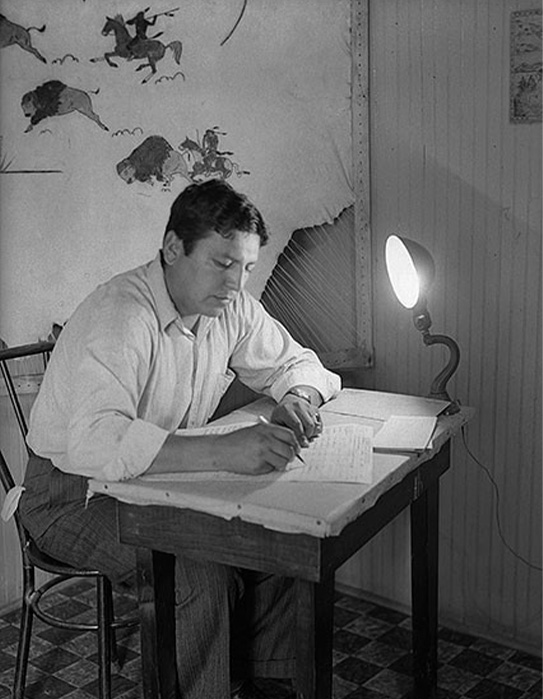
Horace Poolaw, ca. 1940
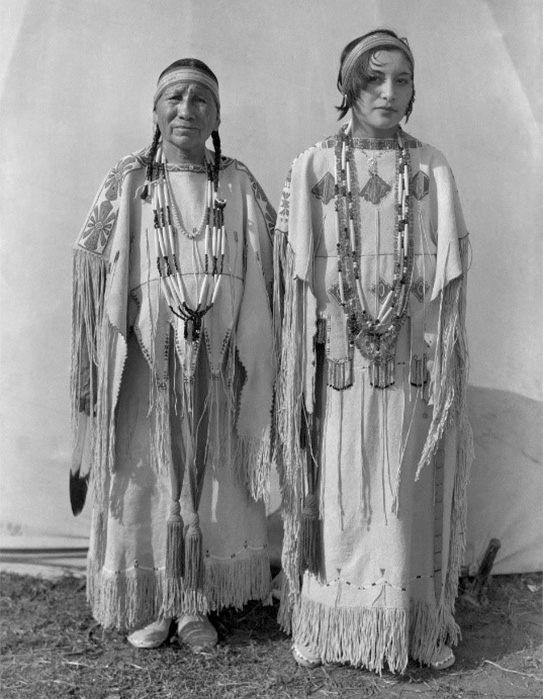
Sindy Libby Keahbone (Kiowa, at left) and Hannah Keahbone (Kiowa, at right), ca. 1930
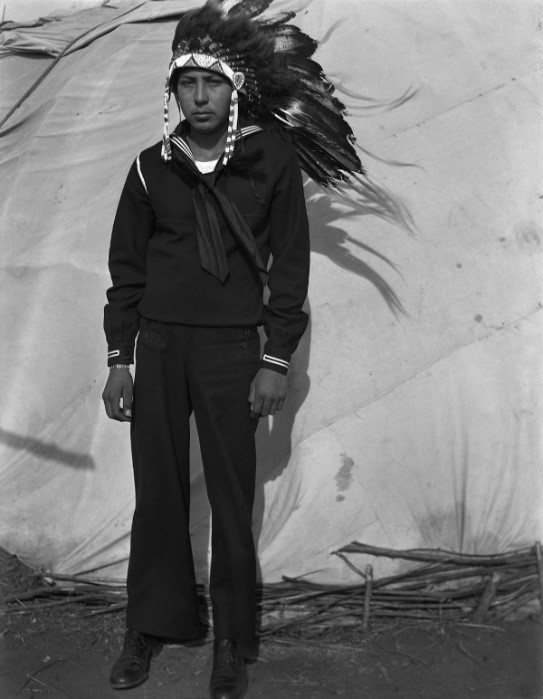
Jerry Poolaw (Kiowa), on leave from duty in the Navy, 1944
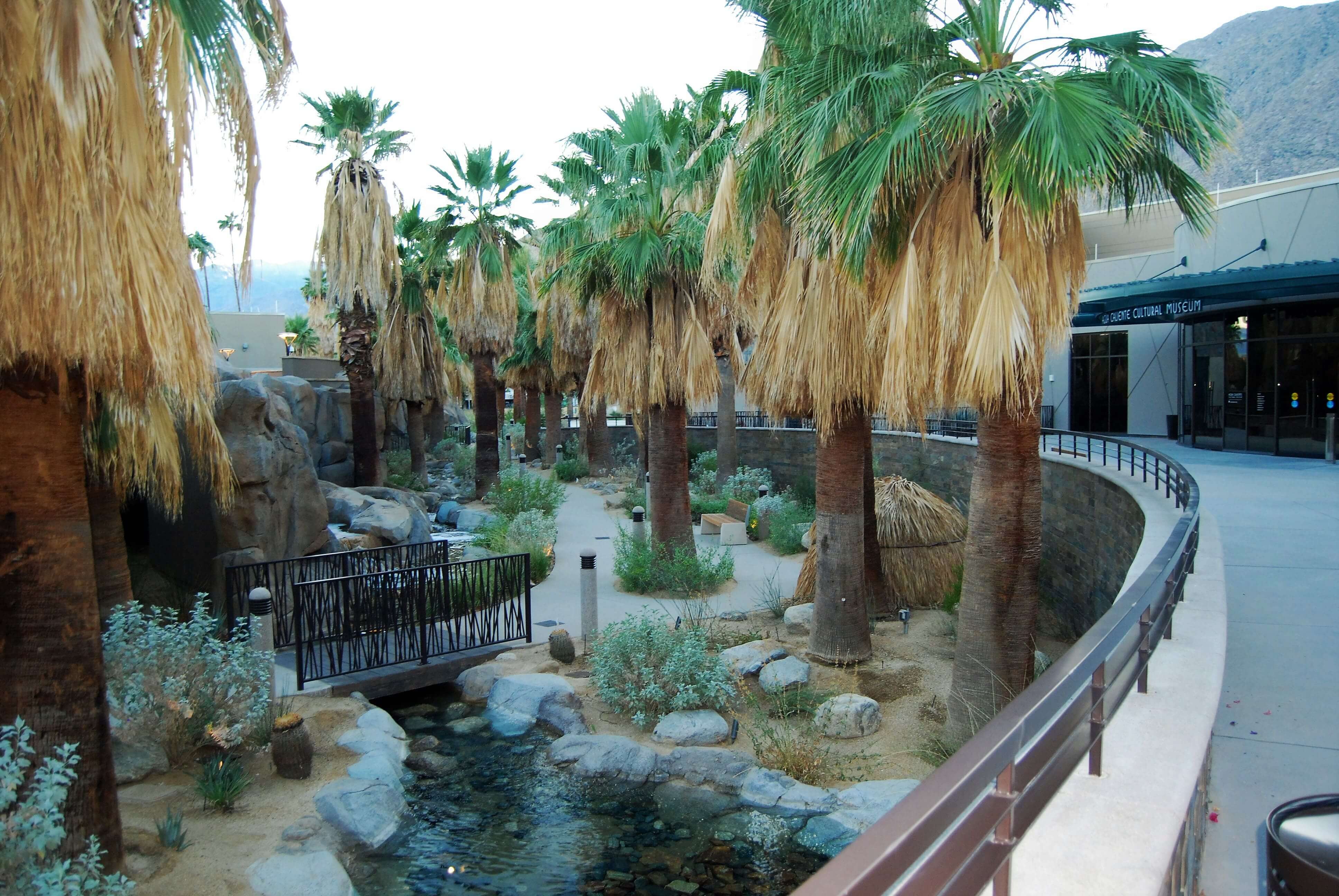
The Oasis Trail is a permanent outdoor exhibition located in the middle of the Agua Caliente Cultural Plaza, that includes native plants, rock formations, and water features inspired by those found in the Agua Caliente Indian Canyons and Tahquitz Canyon. These canyons make up part of the Tribe's ancestral lands.